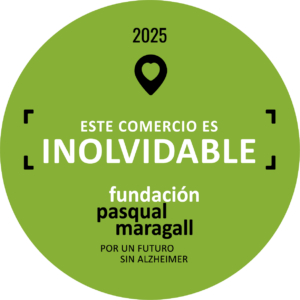PART 1 – EXERCISE GUIDE FOR FIBROMYALGIA
By Dr. Xavier Oliver, Regional Director at Corporación Fisiogestión. Associate Professor at the International University of Catalonia.
Although not all treatments are supported by scientific evidence, there is practically unanimous agreement among professionals that patients with fibromyalgia (FM) benefit from exercise. However, not all exercises are suitable, and the most appropriate ones are not always the most appreciated. As a general rule, exercise should not cause pain and should help ensure that the improvements gained during the learning phase persist, thereby enhancing the patient’s quality of life. Therefore, our guidelines for FM patients must focus on helping them learn to move in the best possible way, using the most suitable types of exercise and following basic principles of postural hygiene.
Before beginning any exercise program, it is essential for patients to receive proper health education. They should understand all the symptoms of the condition, what is expected from their participation in the program, and the importance of their involvement in achieving the planned goals. Patients should also be aware that fibromyalgia is a bothersome but generally benign condition that rarely leads to disability or incapacity. FM patients tend to rest excessively, which promotes muscle atrophy.
As an initial recommendation, patients should engage in moderate physical activity, such as walking, swimming, or cycling on flat terrain or using a stationary bike. They may begin with a maximum of 10 minutes per day. If no increase in discomfort is noted, or if the symptoms begin to subside, the type and variety of exercises can be increased, aiming for a maximum of 2 hours of exercise per day, in the best-case scenario. It is important to remind patients not to perform any one type of exercise for more than 10 minutes a day, with the exception of walking, which should be done for one hour (always on flat terrain).
This approach requires a clear and structured therapeutic guide to help patients integrate new physical habits into their daily lives.
THERAPEUTIC EXERCISE GUIDE
(a) Numbers indicate the maximum number of minutes per day (e.g., 10 minutes, 30 minutes, etc.) (b) Numbers indicate sets and repetitions (e.g., 5×2: do the exercise 5 times, rest, and repeat another set of 5 times = 2 sets of 5 repetitions)
BREATHING
Exercise 1: Lying on your back with knees bent. Place both hands on your abdomen. Inhale slowly through your nose while raising both arms in a semi-flexed position over your head. Once you reach maximum inhalation, return to the starting position, exhaling slowly through your mouth while pressing on your abdomen at the end of the breath.
STRETCHING
Exercise 2:
Starting from a lying position with knees bent, lift one leg toward the chest. Once it reaches maximum flexion, extend the leg upward with maximum dorsiflexion of the foot. Return to the starting position using the reverse movement pattern.
LUMBAR POSTURE CORRECTION
Exercise 3:
Lying on your back, lift the gluteal region off the mat without lifting the lumbar spine. Hold for 3 seconds, then return to the starting position.
QUADRUPED POSITION
Exercise 4:
On hands and knees, with hips and shoulders at 90-degree angles. Arch the lower back downward (abdomen toward the floor) to create lumbar hyperextension. Then, round the upper back upward while tucking in the abdomen, moving between the two positions without pain.
STRENGTHENING
Exercise 5:
Lying on your back, hands behind your neck, knees bent, with one foot resting on the opposite knee. Bring the elbow of the opposite side toward the elevated knee, maintaining elbow alignment perpendicular to the torso. Return to the starting position.
Exercise 6:
Lying face down with a pillow under the abdomen and limbs relaxed. Lift and extend one arm and the opposite leg simultaneously, stretching as much as possible. Alternate sides.
RELAXATION
Exercise 7:
Lying on your back with hands on the abdomen. Perform slow, deep breathing—inhale through the nose and exhale through the mouth as if gently blowing out a candle without extinguishing it.
PART 2 – RECUPERATION FM, EXERCISE AND FIBROMYALGIA
By Dr. J. Carbonell, Rheumatologist at Hospital del Mar and Hospital de la Esperanza, Barcelona.
Recuperation FM is an oral rehydration solution with mineral salts, ideal for recovery after physical activity.
In a previous study (abstract published in Reumatología Clínica), 7% of fibromyalgia patients treated with the solution showed a positive response in pain reduction, a response not observed in the placebo group. The effect appeared rapidly in the responding patients.
HOW TO TAKE RECUPERATION FM?
Recuperat-ion FM should be taken by diluting one or two sachets in 1 to 1.5 liters of water, to be consumed throughout the day—preferably before, during, and after physical activity. If the patient is not engaging in exercise and struggles to drink a full liter of water, 500 ml may be sufficient.
The treatment period ranges from three to six months or longer, depending on the patient’s ability to perform physical activity.
IS RECUPERAT-ION FM ENOUGH FOR FIBROMYALGIA PATIENTS?
Of course not. According to all scientific society guidelines, fibromyalgia treatment should include exercise, cognitive-behavioral therapy, and pharmacological treatment. Recuperat-ion is a nutritional supplement especially suitable for patients who exercise, but it must complement—not replace—the physician’s prescribed treatment plan.
WHAT MONITORING IS REQUIRED WITH RECUPERATION FM?
No adverse effects different from the placebo group were observed in the clinical study. Thus, Recuperat-ion FM is considered a safe and healthy product. As it contains sodium, blood pressure should be monitored in patients with hypertension. However, most fibromyalgia patients do not typically suffer from high blood pressure.
HOW TO ASSESS RESPONSE TO RECUPERATION FM?
Recuperat-ion FM deeply hydrates the body and muscles, helping prevent and combat dehydration. It reduces fatigue and improves post-exercise recovery. For fibromyalgia patients, its use facilitates physical activity as part of a comprehensive treatment plan.
To assess the response, visual analog scales are used to measure pain, fatigue, sleep disorders, anxiety, and depression. Patients also use a global health visual analog scale to assess their overall condition.
REFERENCES
Carmona L, Ballina FJ, Gabriel R, Laffon A, EPISER Study Group. The burden of musculoskeletal diseases in the general population of Spain: results from a national survey. Ann Rheum Dis. 2001;60:1040-5.
Collado A, et al. Consensus document on the diagnosis and treatment of fibromyalgia in Catalonia. Med Clin. 2002;118:745-9.
Goldenberg DL, Burckhardt C, Crofford L. Management of fibromyalgia sydrome. JAMA 2004;292:2388-2395.
Alegre de Miquel C, et al. Systematic review of pharmacological interventions in fibromyalgia. Med Clin. 2005;1125(20):784-7.
Pujol P, et al. Rehydration in endurance athletes: effects of a drink with low vs. moderately high sodium content (Recuperat-ion). CAR Sant Cugat (Barcelona), BIOMET, CETIR (Barcelona).
Carbonell J, et al. Multicenter, triple-blind, placebo-controlled, randomized clinical trial of the efficacy and safety of an oral rehydration solution (Recuperat-ion) in the treatment of fibromyalgia. Abstract book. Spanish Society of Rheumatology Congress. Granada, 2007.
Nicolodi M, Sicuteri F. Fibromyalgia and migraine: two faces of the same mechanism. Adv Exp Med Biol 1996;398:373-379.
Puttini PS, Caruso I. Primary fibromyalgia syndrome and 5-hydroxy-L-tryptophan: a 90-day open study. J Int Med Res 1992;20:182-189.
Caruso I, et al. Double-blind study of 5-hydroxytryptophan vs. placebo in the treatment of primary fibromyalgia syndrome.

